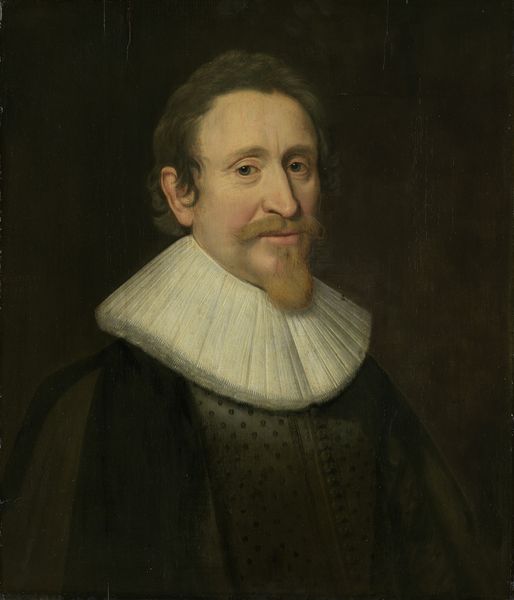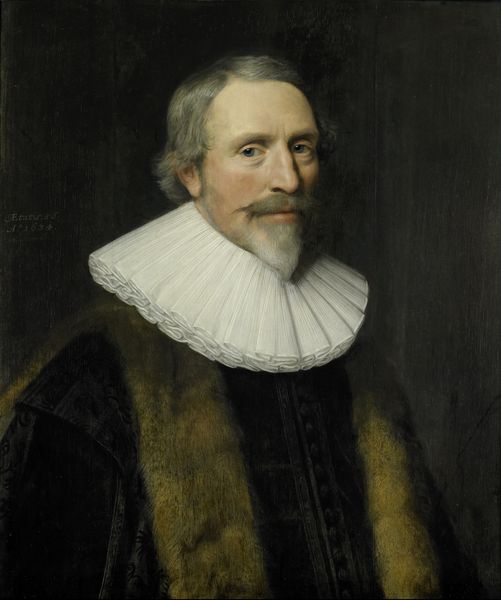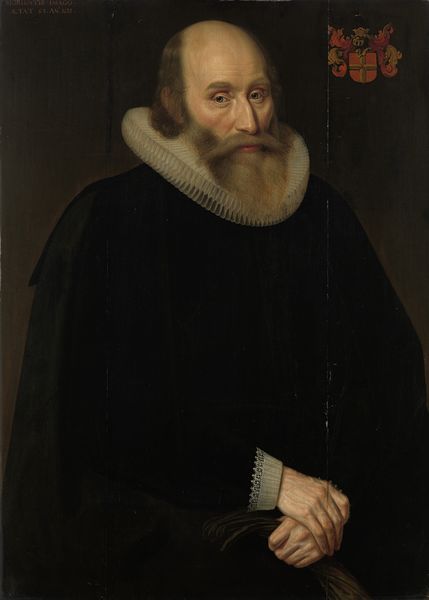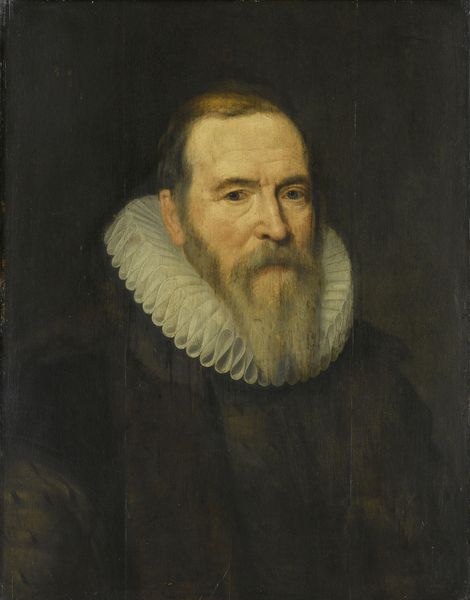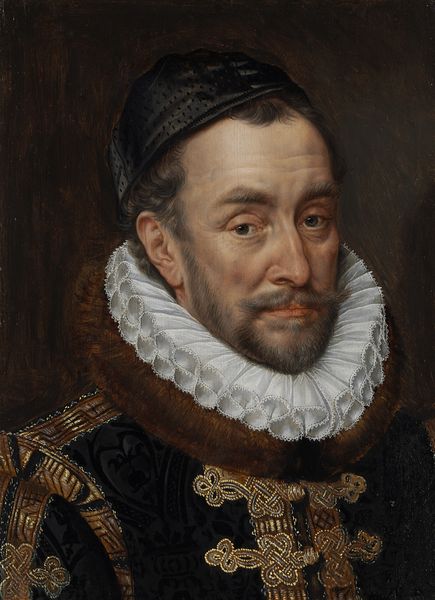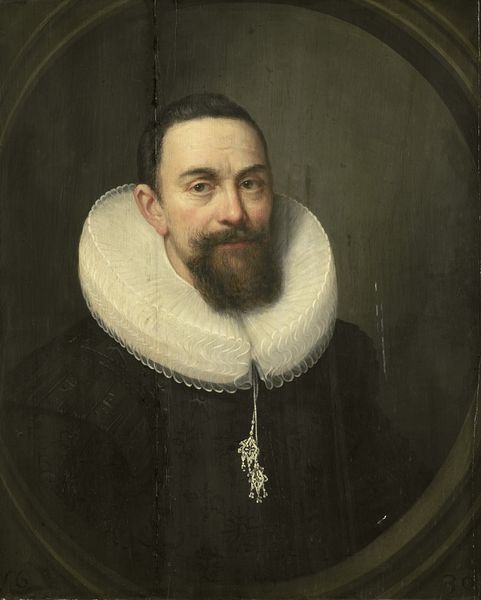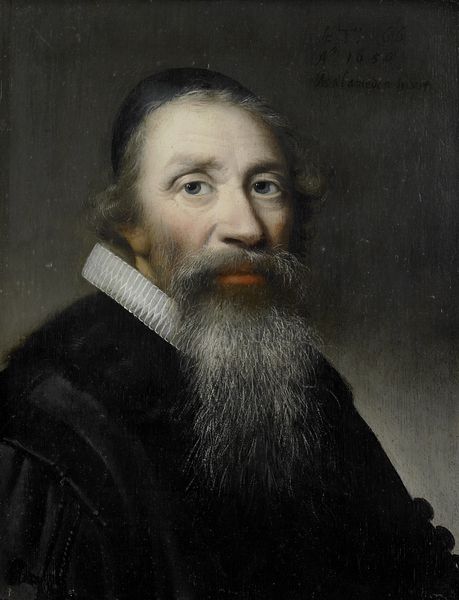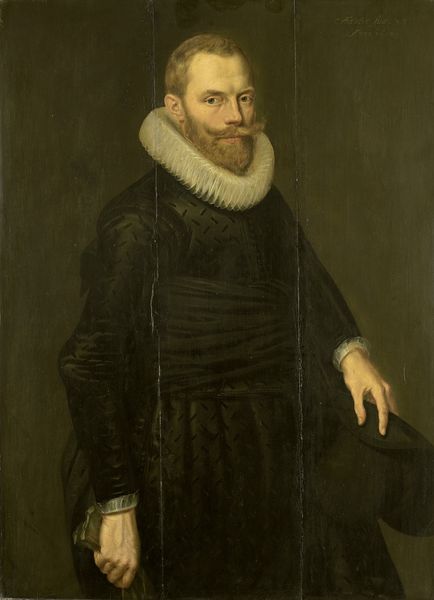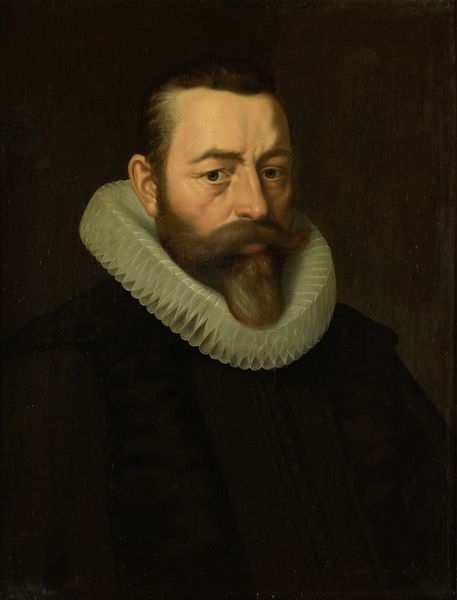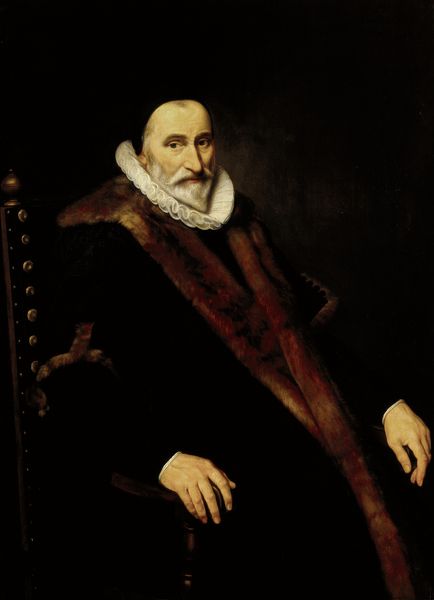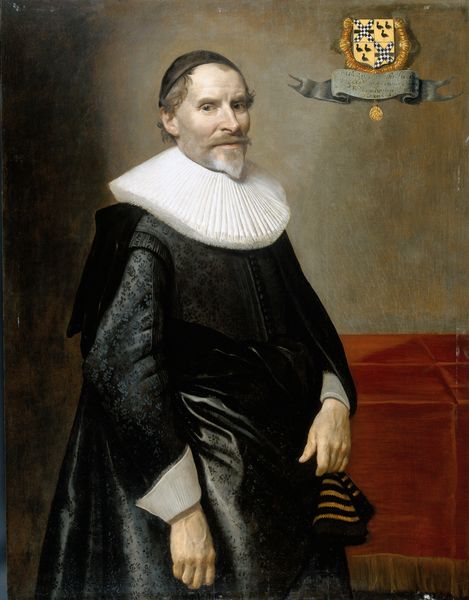
oil-paint
#
portrait
#
baroque
#
portrait
#
oil-paint
#
history-painting
Dimensions: support height 69.6 cm, support width 58.6 cm, outer size depth 8 cm
Copyright: Rijks Museum: Open Domain
Michiel Jansz. van Mierevelt painted this portrait of Johannes Wtenbogaert in the Dutch Republic, sometime in the early 17th century. The portrait offers a fascinating lens through which to view the religious and political tensions of the time. Wtenbogaert was a key figure in the Remonstrant movement, a liberal branch of the Dutch Reformed Church that challenged the strict Calvinist orthodoxy. The crisp, detailed realism, typical of Dutch Golden Age portraiture, serves here to emphasize the sitter's character and intellect. The severe black attire and the simple, yet elegant, ruff speak to a man of status, but also to the values of the Protestant Reformation: piety, simplicity, and a focus on inner faith. Understanding this work requires us to delve into the theological debates that shaped the young Dutch Republic. Historical archives, theological treatises, and even pamphlets from the period can shed light on the controversies surrounding Wtenbogaert and his fellow Remonstrants. Studying this portrait allows us to consider the public role of art as a tool for shaping perceptions of the sitter's cultural and religious context.
Comments
No comments
Be the first to comment and join the conversation on the ultimate creative platform.
